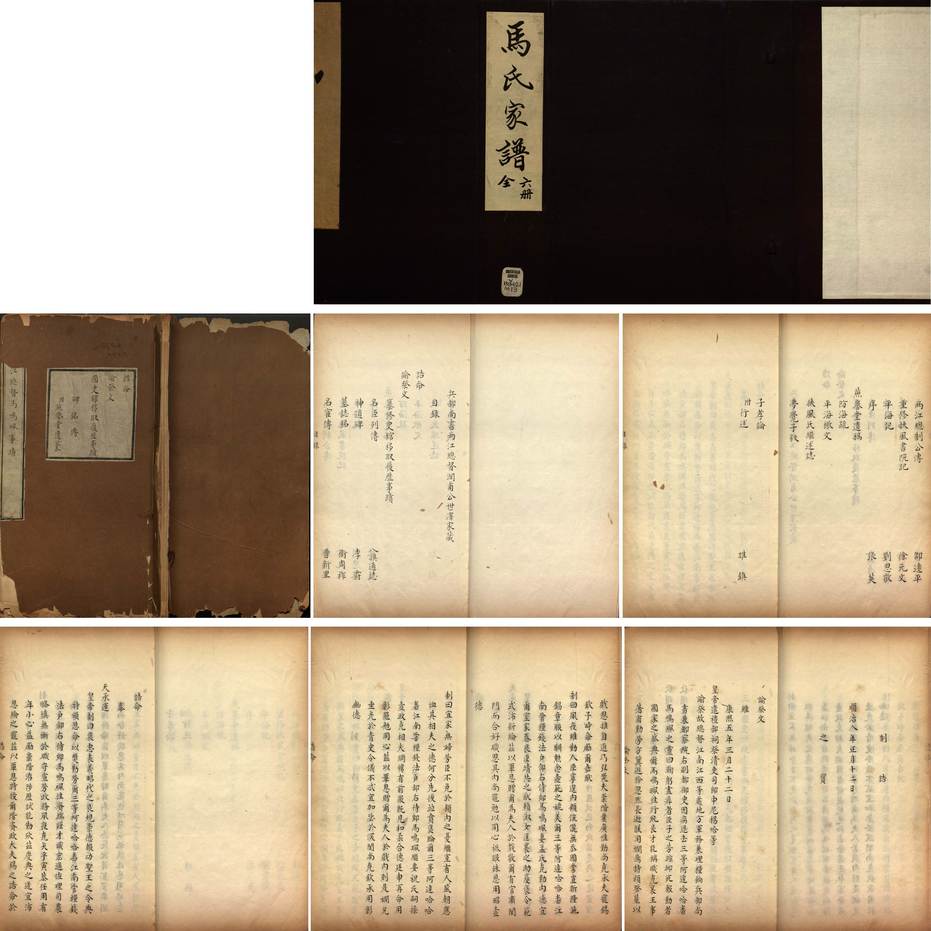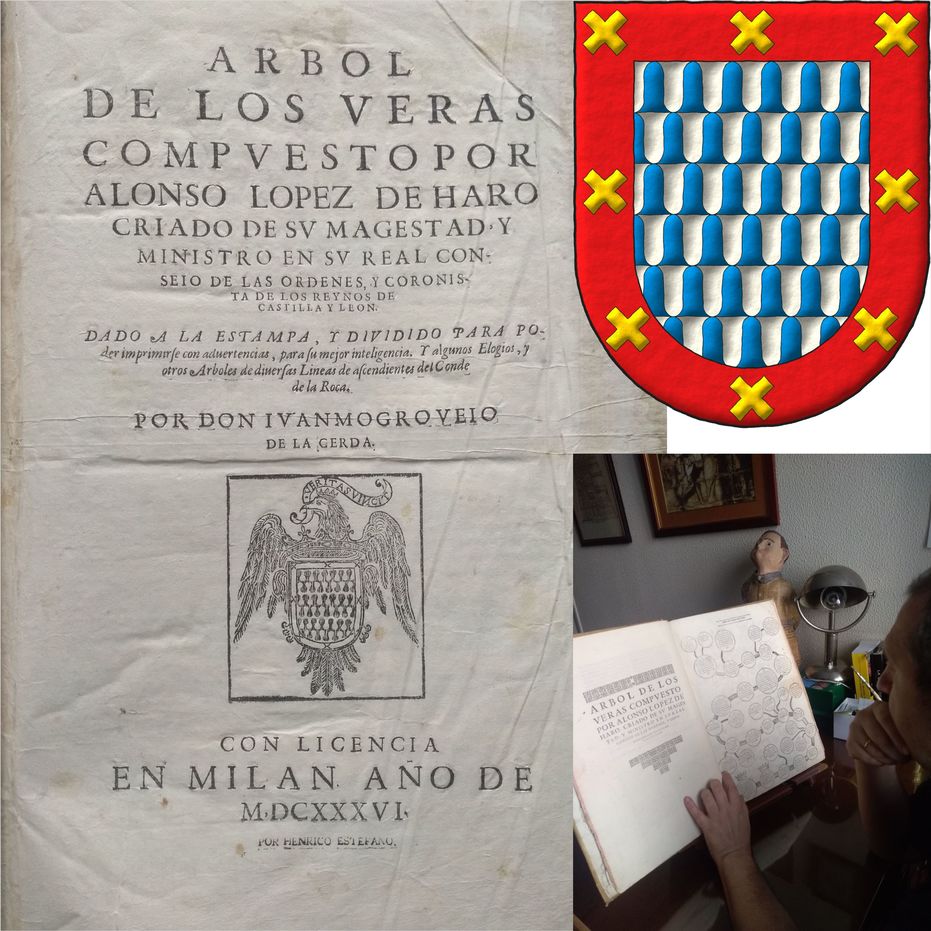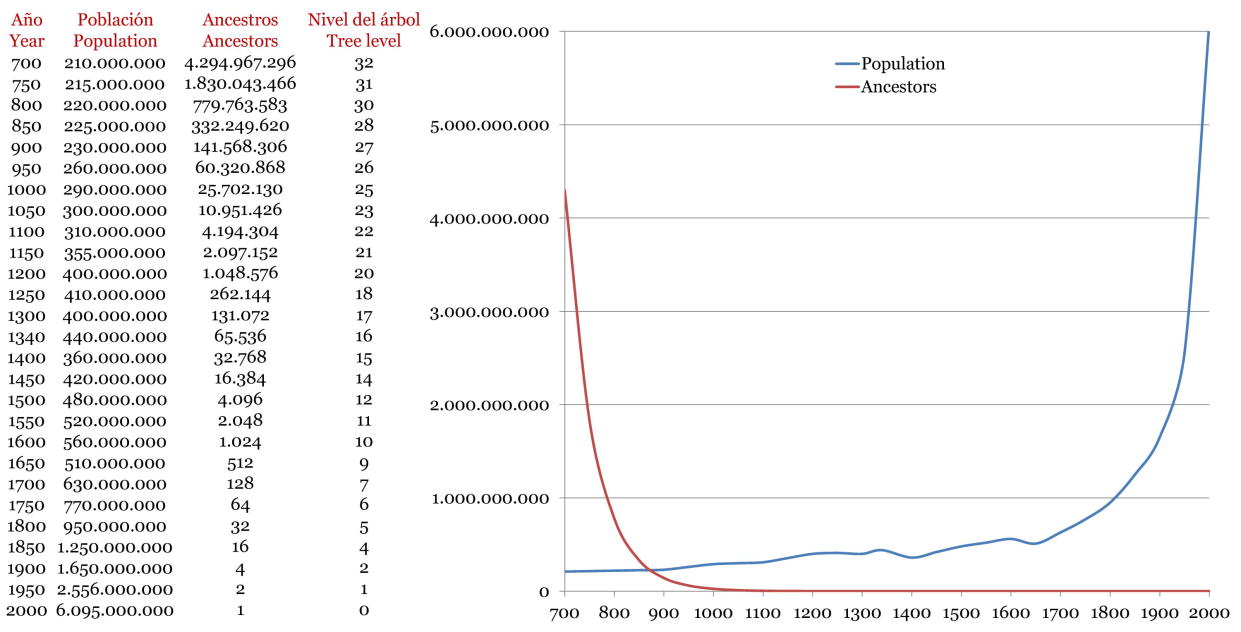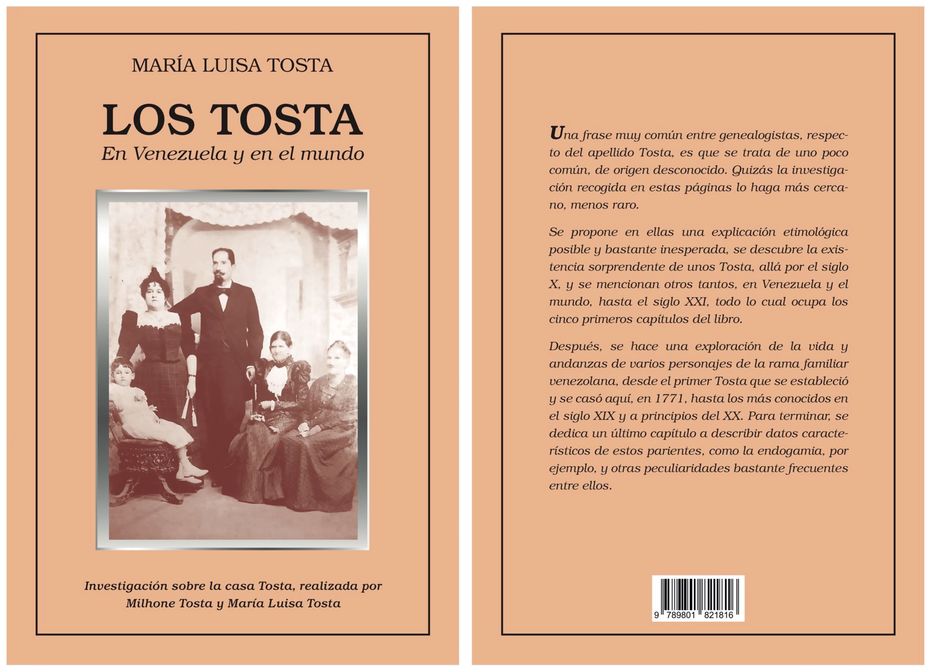Genealogy


![Ver [Burke, J.; 1836] en referencias bibliográficas. Libro abierto, hojas de plata, filo de oro, guardas de gules, tapas de sable.](../css/Libro.Bibliografia.png)
Burke, J.; 1836
John Burke, «A Genealogical and Heraldic History of the Commoners of Great Britain and Ireland: Enjoying Territorial Possessions or High Official Rank; but Uninvested with Heritable Honours», 4 volumes, volume 1 with 726 printed pages, volume 2 with 740 printed pages, volume 3 with 738 printed pages, volume 4 with 805 printed pages, published for Henry Colburn by R. Bentley, Bell and Bradfute, in Edinburgh, and J. Gumming in Dublin, London, 1836.
Overview
This extensive work spans four volumes, 726 + 740 + 738 + 805 = 2309 pages, and provides a detailed account of the genealogy and heraldry of commoners in Great Britain and Ireland who held territorial possessions or high official ranks, yet were not vested with heritable honors.
Coats of arms and blazons
Each volume contains black and white illustrations of coats of arms, typically including the crest and wreath, with some also featuring supporters. The illustrations do not utilize hatching or tricking for tinctures, the tinctures must be seen in the text of the written blazons. For each lineage, the coat of arms is illustrated at the beginning, followed by a genealogical account, and the blazon is provided at the end. For example, for the Talbot lineage, in the volume 3, page 359-360, the blazon is written as follows: «Arms - Gu. a lion rampant, within a bordure engr. or. Crest - On a chapeau gu. turned up ermine, a lion statant or, the tail extended. Motto - Prest d'accomplir.» where «gu» is Gules and «or» is Or.
Bibliographical reference of century XIX.
Classification: Armorial roll, English language and In black and white.
The author is Burke, John.
The following article cites this bibliographic reference:
External resources:
Internal resources: BurkeJ1836.Commoners.Volume.01.pdf 758 pages in PDF format, BurkeJ1836.Commoners.Volume.02.pdf 772 pages in PDF format, BurkeJ1836.Commoners.Volume.03.pdf 762 pages in PDF format and BurkeJ1836.Commoners.Volume.04.pdf 838 pages in PDF format.


![Ver [Lainé, P. L.; Lainé, J. J. L.; 1828] en referencias bibliográficas. Libro abierto, hojas de plata, filo de oro, guardas de gules, tapas de sable.](../css/Libro.Bibliografia.png)
Lainé, P. L.; Lainé, J. J. L.; 1828
P. Louis Lainé, J. J. L. Lainé, «Archives généalogiques et historiques de la noblesse de France, ou, Recueil de preuves, mémoires et notices généralogiques, servant à constater l'origine, la filiation, les alliances et lés illustrations religieuses, civiles et militaires de diverses maisons et familles nobles du royaume; Avec la collection des nobiliaires généraux des provinces de France», 11 volumes from 1828 to 1850, published by M. Lainé, printed by De Hauquelin et Dautriche, París, 1844.
Bibliographical reference of century XIX.
Classification: French language and In black and white.
Authors: Lainé, P. Louis and Lainé, J. J. L..
External links:
- Google books, Volume I, 1828.
- Google books, Volume II, 1829.
- Google books, Volume III, 1830.
- Google books, Volume IV, 1834.
- Google books, Volume V, 1836.
- Google books, Volume VI, 1839.
- Google books, Volume VII, 1841.
- Google books, Volume VIII, 1843.
- Google books, Volume IX, 1844.
- Google books, Volume X, 1846.
- Google books, Volume XI, 1850.


![Ver [Ma, F.; Century XVI] en referencias bibliográficas. Libro abierto, hojas de plata, filo de oro, guardas de gules, tapas de sable.](../css/Libro.Bibliografia.png)
Ma, F.; Century XVI
Anonymous, «Genealogy of the Mǎ Family, 馬民家记», manuscript, from the late Ming to early Qing dynasty, 6 volumes, volume 1, 102 pages, volume 2, 304 pages, volume 3, 242 pages, volume 4, 202 pages, volume 5, 100 pages, and volume 6, 178 pages, total 1128 pages, dated between 1600 and 1735, circa 1735.
Disclaimer
These comments has been writen based on my limited knowledge of Classical Chinese. As such, it may contain inaccuracies or errors. I apologize for any errors and welcome corrections from those more knowledgeable in the subject. It is important to note that, although the manuscript is written in Classical Chinese, some characters in theses comments are in Simplified Chinese.
Cover
-
The title of the work on the cover is
«馬民家记», where:
- «民家记» means Genealogy, and
- «馬» is Mǎ in pīnyīn, it is the family name, literally meaning Horse.
-
The character «馬» is an ideogram, representing a galloping horse:
- the head faces left,
- three horizontal lines to the right of the head represent the mane blowing in the wind,
- the four vertical strokes below represent the legs, and
- the curved stroke at the bottom right symbolizes the tail.
-
Beneath the title on the cover,
we read, from top to bottom and right to left,
as is typical in traditional Chinese:
«六写全» where:
- «六» means six,
- «写» means book, it hasn't plural, books for us, and
- «全» can be translated as complete.
Four generations
The title might suggest it is just the family tree of the Mǎ family, but it is actually a chronicle of the history of a lineage over four generations. Therefore, although it is dated between 1600 and 1735, it is likely written closer to 1735.
The manuscript narrates the deeds and actions of four generations of the Mǎ family from the city of Liáoyáng in northeastern China:
- Great-grandfather: Mǎ Mingpei (1600–1666),
- Grandfather: Mǎ Xiongzhen (1634–1677),
- Father: Mǎ Shiji (1650–1714),
- Son: Mǎ Guozhen (1666–1720).
It seems to be a story of ascent and descent:
- The great-grandfather was a significant figure.
- The grandfather was even more prominent, eventually assassinated, and posthumously awarded titles and an honorary name, «Wenyi».
- The father and son, though important, did not reach the heights of their predecessors.
This manuscript contains official titles, title grants, imperial praises for their actions, historical events, and also the poetic and literary works of the four generations.
Scanned for readability by Westerners
The correspondence between these 6 volumes and the 9 scaned PDF files is as follows:
- Volume 1: PDF 1.
- Volume 2: PDF 2 and PDF 3.
- Volume 3: PDF 4 and PDF 5.
- Volume 4: PDF 6 and PDF 7.
- Volume 5: PDF 8.
- Volume 6: PDF 9.
The Chinese books are read: from back to front, from right to left, and from top to bottom.
The scanning process was done so that what would be the last pages of the book for us, and the first for the Chinese, are at the beginning of the PDF. The pages are scanned in pairs to be readable by Westerners: starting from page 2-1, read from right to left, with 1 blank, and continuing 4-3, 6-5, 8-9... until the end of the PDF file.
The Chinese script used in this manuscript is clear and legible compared to other documents from that era.
Pages
6 volumes:
- volume 1, 51*2 = 102 pages,
- volume 2, 65*2+87*2 = 304 pages,
- volume 3, 66*2+55*2 = 242 pages,
- volume 4, 48*2+53*2 = 202 pages,
- volume 5, 50*2 = 100 pages, and
- volume 6, 89*2 = 178 pages,
Bibliographical reference of century XVI.
Classification: Manuscript, Classical Chinese language and In black and white.
The author is anonymous.
External resources:
- Library of the Congress.
- Volume 2, initial part.
- Volume 2, final part.
- Volume 3, initial part.
- Volume 3, final part.
- Volume 4, initial part.
- Volume 4, final part.
- Volume 5.
- Volume 6.
Internal resources: MaFamiliaXVIII.01a.tapas.pdf Volume 1 PDF format, MaFamiliaXVIII.02a.tapas.pdf Volume 2, initial part, PDF format, MaFamiliaXVIII.02b.pdf Volume 2, final part, PDF format, MaFamiliaXVIII.03a.tapas.pdf Volume 3, initial part, PDF format, MaFamiliaXVIII.03b.pdf Volume 3, final part, PDF format, MaFamiliaXVIII.04a.tapas.pdf Volume 4, initial part, PDF format, MaFamiliaXVIII.04b.pdf Volume 4, final part, PDF format, MaFamiliaXVIII.05a.tapas.pdf Volume 5 PDF format and MaFamiliaXVIII.06a.tapas.pdf Volume 6 PDF format.
Bibliographical reference of century XVI.
Classification: Manuscript, Classical Chinese language and In black and white.
The author is anonymous.
External resources:
- Library of the Congress.
- Volume 2, initial part.
- Volume 2, final part.
- Volume 3, initial part.
- Volume 3, final part.
- Volume 4, initial part.
- Volume 4, final part.
- Volume 5.
- Volume 6.
Internal resources: MaFamiliaXVIII.01a.tapas.pdf Volume 1 PDF format, MaFamiliaXVIII.02a.tapas.pdf Volume 2, initial part, PDF format, MaFamiliaXVIII.02b.pdf Volume 2, final part, PDF format, MaFamiliaXVIII.03a.tapas.pdf Volume 3, initial part, PDF format, MaFamiliaXVIII.03b.pdf Volume 3, final part, PDF format, MaFamiliaXVIII.04a.tapas.pdf Volume 4, initial part, PDF format, MaFamiliaXVIII.04b.pdf Volume 4, final part, PDF format, MaFamiliaXVIII.05a.tapas.pdf Volume 5 PDF format and MaFamiliaXVIII.06a.tapas.pdf Volume 6 PDF format.


![Ver [Mogrovejo de la Cerda, J.; 1636] en referencias bibliográficas. Libro abierto, hojas de plata, filo de oro, guardas de gules, tapas de sable.](../css/Libro.Bibliografia.png)
Mogrovejo de la Cerda, J.; 1636
Juan Mogrovejo de la Cerda, «Árbol de los Veras compuesto por Alonso López de Haro, Criado de Su Majestad y Ministro de su Real Consejo de las Órdenes y Cronista de los Reinos de Castilla y León», bound in original parchment, Milan, 1636.
Contents
The book contains a total of 66 main genealogical trees, each with an average of 28 nodes/persons, totaling over 1700 nodes. Additionally, it includes 41 lines of descent with approximately 1150 individuals. The content is composed of:
- Title page with the coat of arms of the Veras.
- Errata and additions.
- Dedication.
- Warnings and introduction by Juan Mogrovejo de la Cerda, folios 1 to 4.
- Tree of the Veras, folios 6 to 66, with 61 genealogical trees.
- Eulogies of five Christian princes known for their virtue and valor, with trees of their descendants up to the Count of La Roca, folios 67 to 72.
- Linear trees of descent from Don Fernando Carlos Antonio de Vera, Doña María Antonia de Vera y Tovar, and Doña Catalina de Vera, folios 73 to 114, with 41 trees.
- Limitations of the work on folio 115.
- Indexes with handwritten corrections, folios 116 to 122.
- Additions to the edition, including a genealogical tree of Don Luis Francisco de la Cerda Sandobal y Rojas, Marqués de Alcalá.
- Additional handwritten documents attached but not bound.
In the previous image, The canting arms of Juan Antonio de Vera y Zúñiga, Count of La Roca, in this book about his genealogy, are canting because «vair~veros~Vera».
The motto in the beak of his sable eagle is «Veritas Vincit», although some authors claim that not all his trees honor this motto [Vera-Ortiz, J.A.; 2009].
The colored version of the coat of arms in this image was painted by me. Blazon: Vair ancient, a bordure gules charged with eight saltires couped Or.
Bibliographical reference of century XVII.
Classification: De bibliotheca, In black and white and Castilian language.
Author: Mogrovejo de la Cerda, Juan.
Bibliographic reference mentioned in the following articles:
External link:
Internal resources: Physical book..


Pedigree collapse, we are all cousins
We have 2 parents, 4 grandparents, 8 great grandparents, 16 great grandparents,... growing exponentially (2n), 32, 64, 128, ... Circa the year 850 we have more «theoretical» ancestors than inhabitants of the world. It follows that:
- Many of our ancestors are repeated in our family tree.
- Many historical figures (philosophers, scientists, writers, artists, kings, warriors, etc.) will appear in our family tree.
- We share many ancestors with others, we are all cousins, we are a great family.
I have painted the following graphic to show this idea. Traveling to the past we see the number of our «theoretical» ancestors grows and the world's population decreases.
The graph is calculated with 2.46 generations per century, and with other rates although the graph changes but the previous conclusions remain. For example, with 4 generations per century, more real rate time ago when we had children at an earlier age, the curves intersect before. If it is done by continents and/or adding the lines without offspring, the high infant mortality and pests of past times,... the curves also cross before.
To this effect is called «pedigree collapse».
Category: Genealogy.


![Ver [Tosta, M. L.; 2021] en referencias bibliográficas. Libro abierto, hojas de plata, filo de oro, guardas de gules, tapas de sable.](../css/Libro.Bibliografia.png)
Tosta, M. L.; 2021
María Luisa Tosta, «Los Tosta en Venezuela y en el mundo», researchers María Luisa Tosta y Milhone Tosta, 618 pages, includes numerous illustrations, with several on each page, graphic design and layout by María Elena Ayala, printed at Gráficas Lauki, ISBN 978-980-18-2181-6, Legal Deposit MI2021000502, Caracas, 2021.
Through the first five chapters, the authors explore the etymology of the Tosta surname, its historical presence in different parts of the world, and its establishment in Venezuela in the 18th century.
In the intermediate chapters, the book delves into the various branches of the Tosta family, tracing their connections and the genealogical links that span multiple generations.
The final chapters focus on the individual stories of the most prominent members of the Venezuelan branch of the family, revealing intriguing aspects such as their significant contributions to the country's history and other unique characteristics.
With an approach that goes beyond genealogy, the author and the researchers contextualize the lives of the Tosta family within the social, political, and economic frameworks of their times, offering a complete and enriching portrait of this fascinating family.
I am honored to be mentioned in the acknowledgments. It is a privilege to have made my small contribution to this a meaningful work.
Bibliographical reference of century XXI.
Classification: Castilian language and In color.
The author is Tosta, María Luisa.
Internal resources: Galley proofs, private copy, sent by one of the researchers.


![Ver [Vera-Ortiz, J.A.; 2009] en referencias bibliográficas. Libro abierto, hojas de plata, filo de oro, guardas de gules, tapas de sable.](../css/Libro.Bibliografia.png)
Vera-Ortiz, J.A.; 2009
Jorge A. Vera-Ortiz, «Linaje emeritense de don Juan Antonio de Vera y Zúñiga, un pícaro conde genealogista y una creencia muy arraigada», Bulletin No. 257 of the Argentine Institute of Genealogical Sciences, pages 27 to 50, Buenos Aires, November-December 2009.
This article examines the lineage of Don Juan Antonio de Vera y Zúñiga, a count whose life and genealogical work are marked by both wit and controversy. The author, Jorge A. Vera-Ortiz, analyzes how deeply rooted beliefs about the lineage of this figure have influenced the historical perception of his legacy. In this way, from 1617 to 1635, the accumulation of studies that appeared exalting the lineage of the Count of La Roca is astonishing. These works were sometimes published under the names of well-known authors and genealogists, and sometimes under less familiar names, but many authors assume that these works were part of the fertile imagination of Juan Antonio de Vera y Zúñiga himself, who published them under pseudonyms to give them greater authority. The book [Mogrovejo de la Cerda, J.; 1636] would be an example of this practice.
Bibliographical reference of century XXI.
Classification: Article and Castilian language.
The author is Vera-Ortiz, Jorge A..
Bibliographical reference mentioned in the following article:
External resource:
Internal resources: A digital and partial transcription of this article..
-
Language
-
Categories of heraldry
-
Divisions of the field
- Without divisions
- Party per pale
- Party per fess
- Party per bend
- Party per bend sinister
- Tierce
- Tierce sinister
- Tierced per pale
- Tierced per fess
- Tierced per bend
- Tierced pallwise inverted
- Quarterly
- Quarterly per saltire
- Gyronny
- Party per fess, the chief per pale
- Party per pale, the sinister per fess
- Party per fess, the base per pale
- Party per pale, the dexter per fess
- Chapé
- Chaussé
- Embrassé
- Contre-embrassé
- Party per chevron
- Enté
- Enté en point
- Flanched
-
Metals
-
Colours
-
Furs
-
Other tinctures
-
Ordinaries and sub-ordinaries
-
Diminutives of the ordinaries
-
Other charges
-
Inanimate charges from Nature
Atom, Crescent, Diamond, Emerald, Estoile, Increscent, Lightning flash, Moon, Mount, Mullet, Mullet of four points, Orbital, Plough of Ursa Major, Rainbow, Ray of the sun, River, Sea, Snowflake, Sun, Sun in splendour, Sun of May, Trimount and Water.
-
Vegetal charges from Nature
Acorn, Apple, Apple tree, Ash, Bluebonnet, Camellia, Chrysanthemum, Cinquefoil, Cornflower, Dogwood flower, Double rose, Elm, Fleur de lis, Flower, Holm oak, Hop cone, Kapok tree, Laurel, Lily, Linden, Lotus flower, Madonna lily, Oak, Olive tree, Palm tree, Pomegranate, Poplar leaf, Rose, Shamrock, Sunflower, Thistle, Tree, Tulip, Vine and Wheat.
-
Animal charges from Nature
Badger, Bald eagle, Barbel, Barn owl, Bear, Beaver, Beetle, Bighorn sheep, Blackbird, Boar, Brach hound, Bull, Doe, Dog, Dolphin, Dove, Eagle, Elephant, Falcon, Fish, Flame, Fly, Fox, Frog, Goat, Goldfinch, Goose, Heron, Horse, Hummingbird, Jaguar, Lark, Leopard, Lion, Lion passant, Lion rampant guardant, Lioness, Lynx, Male figure, Martlet, Merino ram, Owl, Panther, Parrot, Peacock, Pelican, Pelican in her piety, Puffin, Quetzal, Raven, Roe deer, Rooster, Savage, Seagull, Serpent, She-wolf, Stag, Starling, Talbot, Tyger, Vulture, Warren hound and Wolf.
-
Parts of natural charges
Arm, Beak, Branch, Caboshed, Chest, Claw, Covert, Dorsal fin, Eagle claw, Ermine spot, Escallop, Feather, Foot (palmiped), Foreleg, Forepaw, Hand, Head, Heart, Hoof, Leaf, Neck, Ostrich feather, Palm frond, Paw, Roe deers' attires, Shoulder, Sprig, Stags' attires, Stem, Swallow-tail, Tail, Tail addorsed, Tail fin, Talon, Tooth, Trunk, Trunk (elephant), Two hands clasped, Two wings in vol, Udder, Wheat spike, Wing and Wrist.
-
Artificial charges
Ace of spades, Anchor, Anvil, Arch, Arm vambraced, Armillary sphere, Arrow, Axe, Bell, Bell tower, Beret, Bonfire, Book, Bookmark, Bow, Bridge, Broken, Buckle, Cannon, Cannon dismounted, Cannon port, Canopy roof, Carbuncle, Castle, Celtic Trinity knot, Chain, Chess rooks, Church, Clarion, Clay pot, Closed book, Club, Comb, Compass rose, Conductor's baton, Cord, Covered cup, Crozier, Crucible, Cuffed, Cup, Cyclamor, Dagger, Double vajra, Drum, Ecclesiastical cap, Fanon, Federschwert, Fleam, Four crescents joined millsailwise, Galician granary, Garb, Gauntlet, Geometric solid, Grenade, Halberd, Hammer, Harp, Host, Hourglass, Key, Key ward, Knight, Knot, Lantern, Letter, Line, Loincloth, Menorah, Millrind, Millstone, Millwheel, Monstrance, Mortar, Mullet of six points pierced, Nail, Non-classic artifact, Norman ship, Number, Oar, Oil lamp, Open book, Page, Pair of scales, Parchment, Pestle, Piano, Plough share, Polish winged hussar, Port, Portcullis, Potent, Quill, Ribbon, Rosette of acanthus leaves, Sabre, Sackbut, Sail, Scroll, Scythe, Sheaf of tobacco, Ship, Skirt, Spear, Spear's head, Stairway, Star of David, Step, Sword, Symbol, Tetrahedron, Torch, Tower, Trident, Trumpet, Turret, Two-handed sword, Wagon-wheel, Water-bouget, Wheel, Winnowing fan and With a turret.
-
Immaterial charges
Angel, Archangel, Basilisk, Dragon, Dragon's head, Garuda, Golden fleece, Griffin, Heart enflamed, Mermaid, Our Lady of Mercy, Ouroboros, Paschal lamb, Pegasus, Phoenix, Sacred Heart of Jesus, Saint George, Sea-griffin, Trinity, Triton, Unicorn, Winged hand and Wyvern.
-
External elements
-
Heraldic creations
-
References
-
Formats
-
Keywords on this page
Armorial roll, Article, Bibliography, Bordure, Charged, Party per fess, De bibliotheca, In black and white, In color, Genealogy, Gules, Castilian language, Classical Chinese language, French language, English language, Manuscript, Eight, Or, Kingdom of France, Century XIX, Century XVI, Century XVII, Century XXI, Saltire, One and Vair ancient.




